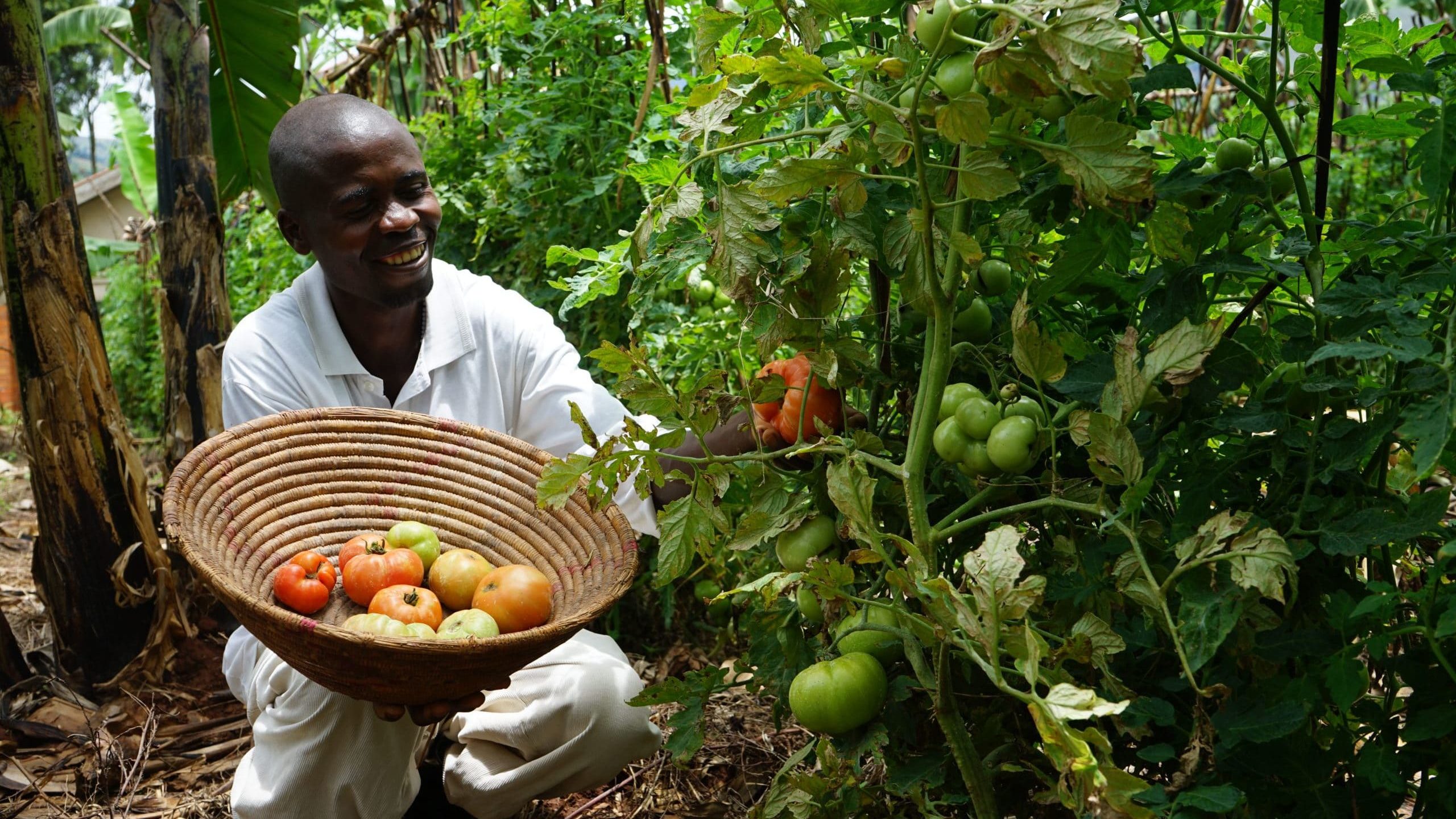Strengthening Smallholder Farmers in Uganda

Zephaniah, a farmer in the rural highlands of western Uganda, walks through his garden, picking ripe tomatoes. He is one of two billion smallholder and family farmers around the world, producing four-fifths of the food people consume overall.* He is also among the 433 million people estimated to live in extreme poverty in Sub-Saharan Africa.** At the age of 14, Zephaniah had to drop out of school due to his family’s financial hardships. Like many people who suffer from ultra poverty in their communities, his family was faced with hunger and food scarcity. To be able to support himself and his family, Zephaniah became a farmer like his parents . Today, he is a father to two children and wants to ensure that his family is not faced with similar difficulties.
Like many small-scale farmers Zephaniah and other members of his community in Kiteme village. Rukungiri lacked the resources and the knowledge to be able to efficiently reap their crops.
As part of our program, Raising the Village provided training to the community to ensure safety during the pre-production, production and harvest stages of his produce, and equip them with the necessary skills to learn organic manure application, pest management, and plant nutrition. They were introduced to adoption of modern and environmentally friendly farming techniques, such as use of hybrid seed, proper spacing, planting in lines, mulching, and good post-harvest handling techniques such as harvesting in time and proper storage.

“There are some modern farming practices that I did not know of, like using climate smart and drought resistant hybrid seed, irrigation, and organic manure application. I did not know I could use my household and animal waste to make manure that would help boost my harvests” – Zephaniah
In last-mile rural communities like Kiteme village, very few people have access to education or technical training in agriculture. Participating in these trainings improve smallholder farmer’s productivity, as well as address the issue of ultra-poverty in the region. Having a network of other farmers within the cluster, an important part of our program methodology, improves the entire agricultural economy and creates a platform to exchange information.
“I have been lucky to learn quite a number of good agronomic practices which I did not know before, thanks to Raising The Village. I intercropped my banana garden with tomatoes which means I have two sources of food and income in a space intended for one. I estimate to harvest at least 30 boxes of tomatoes. Each box has 50kg and each kilogram is UGX 1,000 ($0.27)” – Zephaniah added.
Growing farming businesses in last-mile villages
Farmers are also trained on farming as a business and managing their finances, specifically on the importance of good post-harvest handling, which serves as a big connector to good markets – an important link to improving incomes. Receiving training in the basics of financial literacy plays a crucial role in farmers’ ability to save, acquire loans and the practice keeping records of their finances.
With an increase in the percentage of his yield, Zephaniah expects to get over UGX 1,500,000 ($416.66) from the 30 boxes of tomatoes he harvests. He also joined a Village Saving and Loans Association (VSLA) where he saved a portion of his income from his garden.
As a result of his family’s increased incomes, Zephaniah no longer wants to practice traditional farming and is seen as a model farmer in his community – promoting modern farming to his peers.

“I have always wanted to get money and start my own business. Now, with the income I get from my garden, I will be able to save up enough to start it in a very short time” – Zephaniah
Supporting sustainable agricultural production starts at the community level. Raising The Village partners directly with farmers to help them grow healthier food, access more markets, diversify their incomes and receive the information and tools they need in moving out of ultra-poverty.
* Transforming the World Through Food and Agriculture, FAO and the 2030 Agenda for Sustainable Development Goals
** World Bank Data Blog

